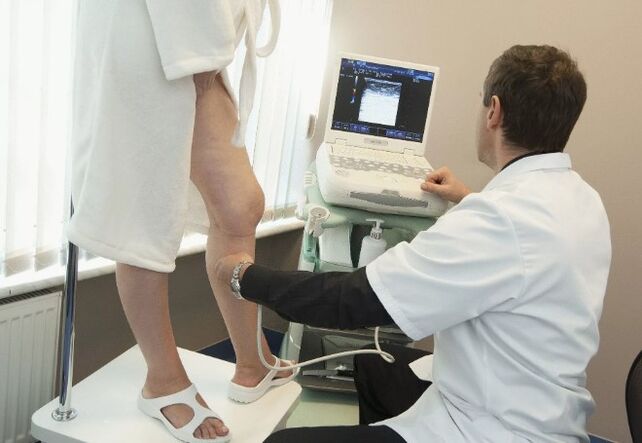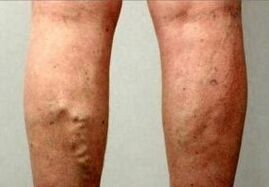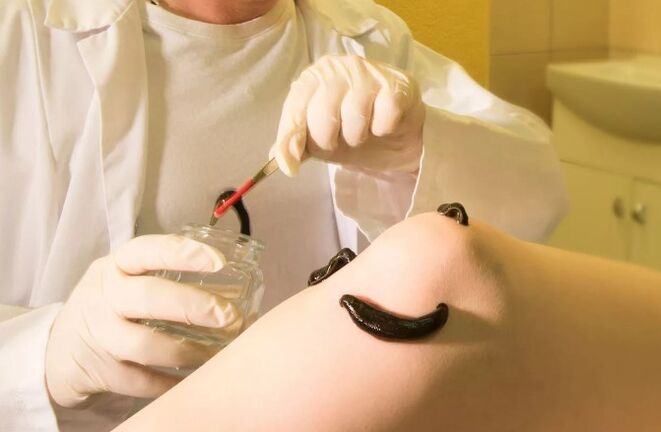Vascular disease is a relatively common phenomenon that can happen to everyone. Like many other diseases, varicose veins have their own stages, and if early manifestations of pathology are often accompanied by discomfort, the last stage is dangerous not only for health, but also for human life. To avoid the onset of serious consequences such as, for example, defects and other things, it is necessary to know the main features of varicose veins, development and ways to prevent complications.

The concept of varicose veins
Varicose veins are a disease that affects the muscle layer and vascular wall connective tissue, as well as their valve. As a result, the veins are expanded, blood circulation in this place, blood reversed through the vessels.
Most people know about varicose veins in their feet. But there is another localization of the disease, as the vessel can be affected anywhere.
Often, in medical practice, varicose veins of the pelvic organs (bladder, uterus), perineum (scrotum, rectum, vagina) are diagnosed. However, in any case, the clinical picture of the disease depends on the place of damage and the level of pathology.
Varicose veins in men and their features
At a young age (on average, at 10-12 years old), a young man may have diseases such as varicose veins.In scientific, this condition is called "varicocele". It is available during simple examination and scrotum palpation. Varicocele is clinically indicated by several symptoms, including:
- pain on the side or half of the affected scrotum, increasing after physical activity;
- severity in testis;
- infertility.
However, Varicocele often may not show itself at all and was identified by accident during the planned examination.
The disease distinguishes three stages:
- Slight expansion of veins, which can be seen when the patient performs Valsalva (straining) samples;
- Veins can be seen and feel in a state of calm patient;
- The vessels change significantly, convinced, filled with blood. Testis in the area affected by the disease is reduced in size, has test consistency.
In adult patients, varicose veins are often diagnosed when treating a doctor with complaints of inability to have children. There is a theory according to varicocele that affects fertility (ability to reproduce heredity) by increasing the temperature in the scrotum, which affects the testis and spermatogenesis. In addition, this type of varicose vein is often combined with damage to the vessels on the feet.

The diagnosis of the disease is simple.As mentioned earlier, you can suspect the scrotum varicose veins on regular examinations, and then the study of vascular beam ultrasound should be done to confirm. As a method of treatment, only surgical intervention is used: doctors only breastfeed, blood circulation is performed according to anastomosis. However, keep in mind that such as varicose veins, surgery does not guarantee complete healing. In addition, the disease in many cases is repeated.
Characteristics of varicose veins in women
Pelvic varicose veins.For women, the disease is a risk of fetal inability. As mentioned above, varicose veins can occur anywhere in the body, including the pelvic area. During pregnancy, the condition worsens, because, first, the vessels of the abdominal cavity are stretched as the fetus grows, and second, the increasing uterus in the size of pressure. Due to this process, the placenta blood circulation is disrupted, which can cause its rejection. In this case, of course, the probability of losing the child increases significantly.
Sometimes varicose veins debut during pregnancy.Before the conception, a woman could not suspect that she had a tendency for disease. However, during the fetal period, the female body is subject to certain changes in the body that can cause some diseases, including varicose veins. These changes include:
- Change the background of the hormone;
- weight gain;
- Anatomical change.
In addition, the number of births is proportional to the risk of getting the next pathology. In addition to pelvic varicose veins, during pregnancy, other complications may occur:
- rupture of the uterus during childbirth;
- thrombophlebitis;
- dermatitis, trophic ulcer;
- venous deficiency.
Therefore, pregnancy is a factor that, unfortunately, can trigger varicose veins, as it contributes to faster pathological development and requires preventive steps with a specific diagnosis.
Other consequences of varicose veins
Thrombophlebitis.Usually varicose veins and venous deficiency lead to inflammation of the blood vessels - phlebitis, which can be combined with the formation of blood clots - thrombophlebitis. Basically, the disease affects the lower leg vessels, resulting in the patient complaining of severe pain in the affected area. Symptoms of general inflammatory reactions are observed: high temperature, weakness. If the treatment does not start timely, the process applies to other veins, the patient's condition worsens.

Thromboembolism.With the presence of thrombophlebitis and varicose veins, there is a risk of severe complications - thromboembolism. It is due to the separation of blood clots from the walls of the vessels, followed by the most important blockage of stems that nourish the liver, light and brain.
Initially, blood clots can, for example, on the feet (this is the most common). However, from the lower limbs, it has to move through the bloodstream to various parts of the body. As a result, falling into a smaller branch than the vascular system, blood clots cause collapse, resulting in the circulation of the site being disrupted by the appearance of ischemia, and then necrosis. Clinically, this is characterized by heart attacks, stroke or pulmonary and fat (pulmonary artery thromboembolism), which often ends with death.
The treatment of patients made from such a diagnosis should be carried out only in intensive care and intensive care unit. Steps to help the patient in this case should be taken immediately -only in this case the patient has safety opportunities.
Dermatitis.Often, these unpleasant complications occur on the inner surface of the lower leg, presenting itself as several symptoms, including:
- skin thinning;
- epidermis pigmentation;
- itching of the affected area;
- the appearance of bubbles that tend to be "open", leading to skin stratification;
- Violation of the sensitivity of the affected area.
Dermatitis does not heal well, cannot be treated. The presence of thrombus involves the occurrence of trophic ulcer - the skin of skin death. In the future, infections may join the ulcer from which purulent wounds may appear.
Telengioectasia.These cosmetic defects, which look like vascular "stars", are due to the rupture of small surface capillaries and early signs of varicose veins.
Hemorrhoids.This is a very common disease - nothing more than rectal varicose veins. It is created by the appearance of absorbed hemorrhoidal nodes, which often come out, break and become inflamed. This causes significant concerns to the patient.
Diagnostic method

The easiest and most affordable way to detect varicose veins and its complications is the ultrasonic doppler vein from the lower leg. In the process of this study, blood flow, blood vessels and their overall wall conditions are evaluated. Therefore, the above diagnosis helps to detect blood clots. In addition, all patients with varicose veins are required to pass the doppler before surgical intervention to exclude the presence of blood clots to prevent complications.
In cases where patients are suspected of venous deficiency or thrombosis, doctors recommend that phlebography x-ray-contrast (methods for assessing vein work).
To do this, a special serum - albumin is introduced onto the ship, after which X -Ray is taken, where the impulses coming from the veins will be registered. Then the result is evaluated.
You can complete the exam with a computed tomography with a military stem contrast. This method is the most accurate, but more expensive. However, this method of diagnosis allows not only to identify vascular disease, but also to assess the condition of the body and other tissues.
Treatment of complications
Therapy for varicose veins depends on the patient's current condition and, directly, the type of complication. Therefore, thrombophlebitis requires prescription of blood aging, anti-inflammatory drugs, antibiotics, painkillers. When the inflammation process decreases, physiotherapy, hirudotherapy (leech treatment) are recommended. Operations can be suggested as an etiotropic treatment - ligation and removal of veins.
Trophic ulcer is not well treated.The surgeon removes the area of necrosis, prescribes the bandage with antiseptic and ointment. Together with this manipulation, antibacterial therapy and blood flow in Vienna are performed.
The stars of the vascular star are eliminated by sclerotherapy, that is, "attached" the vein lumen. After the procedure, wearing compression linen for repeated prevention is prescribed.
Other complications, such as hemorrhoids, varicocele, and pelvic varicose veins can only be cured of surgery after comprehensive examination and identify the affected veins.
Prophesy

Unprofitable prognosis is observed in the case of pulmonary artery thromboembolism, the number of deaths at 75%. Also, thrombophlebitis with trophic lesions of the skin has non -intense features, as with persistent changes in the blood vessels, and the risk of infection also increases, leading to several complications. The consequences of this disease can often cause the patient to become defective.
Indications for the preparation of the patient for defects are:
- presence of thrombosis and transferred thromboembolism;
- repeated erysipelas;
- posttrombopebitis syndrome;
- Ineffective surgical treatment.
Often, defects are given to patients with the last stage of varicose veins with continuous impaired performance.























